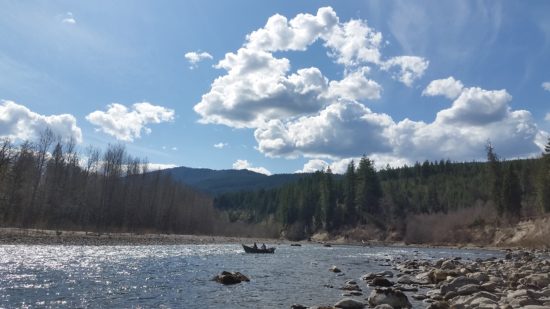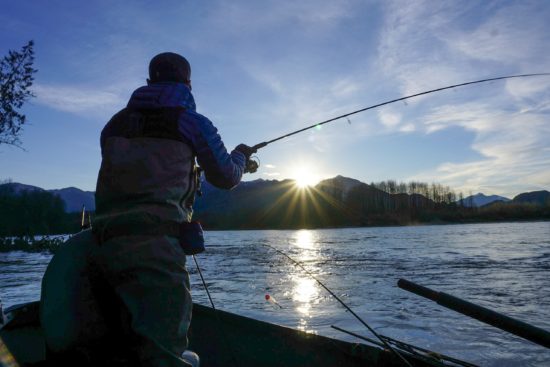
Skagit, Sauk Spring Steelhead Season To Open
After a one-year hiatus, Northwest Washington anglers will again be able to fish parts of the vaunted Skagit and Sauk Rivers for wild steelhead, albeit on a pared-back schedule from the last season.

It’s a bit of a surprise but also a welcome one during a winter that is seeing unprecedented restrictions on Washington Coast streams to ensure escapement goals are met there.
WDFW’s fishery plan calls for the Skagit and Sauk to be open four days a week, Saturdays through Tuesdays, from February 1 through April 15.
That closing date is half a month earlier than when the last season wrapped up in 2019 and coincides with the period that wild fish are more aggressive as the spawn begins on these frigid North Cascades rivers.
Selective-gear restrictions will be in place, but only a single barbless hook can be used, just like in 2019 and on coastal waters this winter.
However, unlike there, fishing out of a boat will be allowed, but not while under power on the Skagit, and watercraft with internal combustion motors can’t be used to fish on the Sauk.
WDFW Fish Program Director Kelly Cunningham says that’s because there are “different conservation concerns” between Olympic Peninsula, Chehalis Basin and Willapa Bay rivers and these two.
Open water on the Skagit is from The Dalles Bridge in Concrete up to the Cascade Road Bridge in Marblemount; on the Sauk, it’s from the mouth up to the Sauk Prairie Bridge in Darrington by the Hampton Mill.

This year’s forecast is for 4,297 wild winter steelhead back to the Skagit system, nearly 300 more than the threshold to hold a season. Managers are modeling a sport catch of 782 and a 10 percent hooking mortality, or 76 fish.
Some fishermen will debate that percentage, believing it to be lower, but if WDFW’s math holds true, the impact rate of 1.8 percent would be well below the 4.0 percent cap.
The 2020 preseason prediction was infamously 38 shy of the 4,000-fish benchmark to hold any semblance of a fishery, which kept the rivers closed, disappointing, frustrating and angering anglers.
Since 2010 an enormous effort has gone into reopening them, including rallies on the banks of Howard Miller Steelhead Park, lobbying the Fish and Wildlife Commission to get behind it, getting WDFW staffers and local tribes to come up with a management plan, and then having the feds sign off on holding fisheries over an Endangered Species Act-listed stock.
But the closure was also the right move coming after 2013-15’s marine heat wave, or Blob, messed with steelhead forage at sea and dried up their freshwater habitat or left it as warm trickles due to snowpack drought, impacting multiple year-classes.
It’s good to see this positive sign, and higher runs in the future could yield more days on the water under the guiding ramped state-tribal management plan.
That also allows local tribes to net the river and they and WDFW are finalizing documents to send to NMFS on that.
WDFW will again heavily monitor the state fishery, with creel surveys expected every day the rivers are open.
